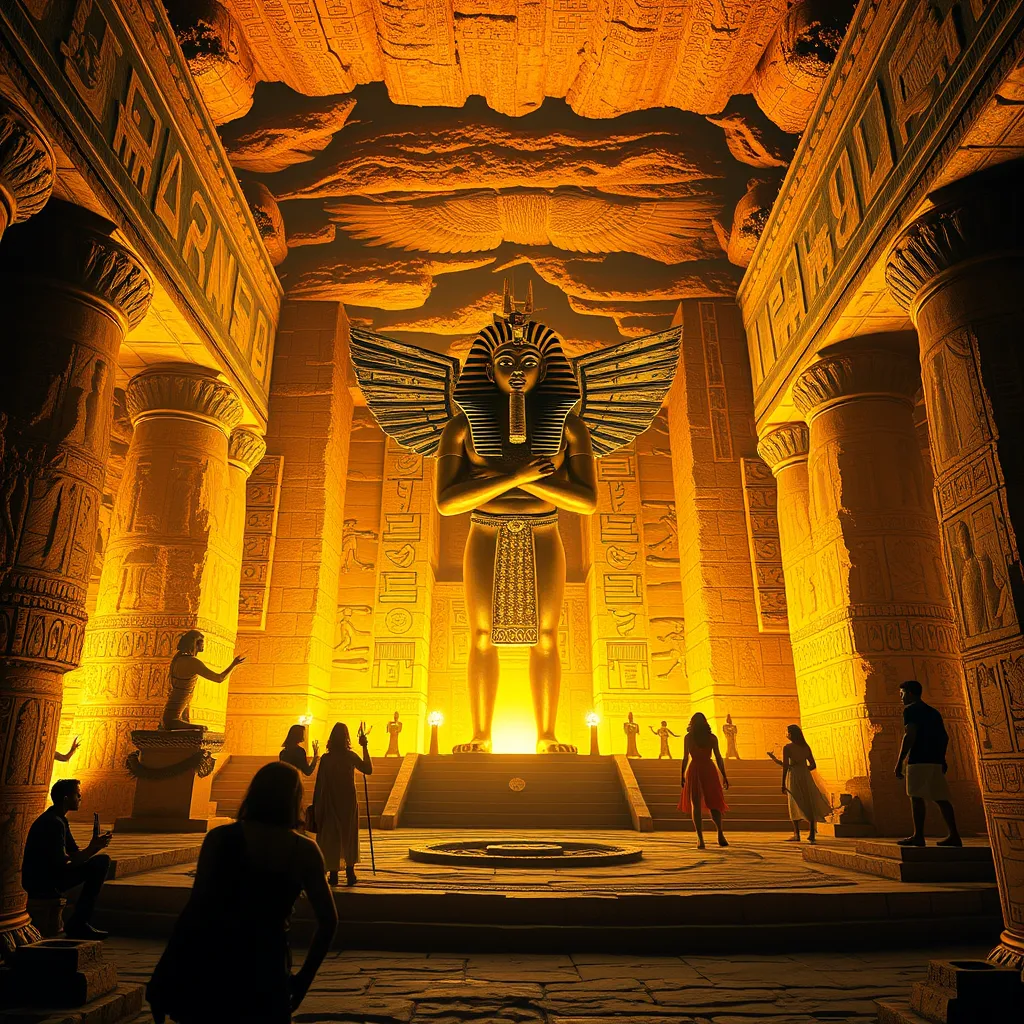The Duat: Unveiling the Secrets of the Afterlife
Introduction to the Duat
The Duat, often referred to as the Egyptian underworld, is a crucial concept in ancient Egyptian belief systems. It represents not only the realm of the dead but also serves as a bridge between life and the afterlife. The significance of the Duat lies in its intricate portrayal of the afterlife journey, where the deceased must navigate challenges and trials to achieve eternal life.
In Egyptian mythology, the afterlife is depicted as a continuation of earthly existence, where the soul’s actions in life determine its fate in the Duat. This belief system emphasizes moral integrity, the importance of rituals, and the need for proper burial practices to ensure safe passage into the afterlife.
Historical Context of the Duat
The origins of the Duat can be traced back to ancient Egyptian texts, including the Pyramid Texts and Coffin Texts, which date from the Old Kingdom through the Middle Kingdom. These texts provide insight into the early beliefs surrounding death and the afterlife, establishing the Duat as a central theme in funerary practices.
Throughout different dynasties, beliefs about the Duat evolved. During the New Kingdom, the concept became more elaborate, with the inclusion of detailed descriptions of the journey through the Duat and the various trials that souls would encounter. The Duat transformed into a rich tapestry of mythological narratives that offered guidance and hope to the deceased and their families.
Geography and Structure of the Duat
The Duat is often depicted as a vast, complex landscape comprising various realms, rivers, and fields. Its geography is symbolic, representing different stages of the soul’s journey:
- The River of Night: A dark river that souls must cross, often associated with challenges and dangers.
- The Field of Reeds: A paradise where the worthy can enjoy eternal bliss, resembling the life they had on earth.
- The Hall of Judgment: The place where the deceased faces their final judgment before Osiris.
Within the Duat, various deities and entities play crucial roles. These include guardians, guides, and judges, each contributing to the richness of the afterlife experience. The interplay between the physical and spiritual realms is a fundamental aspect of the Duat’s structure.
Journey Through the Duat
The journey through the Duat begins immediately after death. The deceased must navigate a series of challenges and trials that test their worthiness. One of the most critical moments in this journey is the Weighing of the Heart, a significant judgment process:
- The heart of the deceased is weighed against the feather of Ma’at, symbolizing truth and justice.
- If the heart is lighter than the feather, the soul is deemed worthy and permitted to enter the afterlife.
- If the heart is heavier, the soul faces annihilation, devoured by the monster Ammit.
This journey symbolizes the moral and ethical evaluation of one’s life, reflecting the Egyptians’ deep belief in accountability and the consequences of one’s actions.
Deities of the Duat
The Duat is populated by numerous deities, each with specific roles in guiding and protecting souls:
- Osiris: The god of the afterlife and resurrection, Osiris presides over the judgment of souls.
- Anubis: The jackal-headed god associated with mummification and the protection of graves, Anubis guides souls through the Duat.
- Isis: The goddess of magic and healing, Isis plays a nurturing role in ensuring the safety of the deceased.
These deities embody various aspects of the afterlife, providing comfort, protection, and guidance to those navigating the complexities of the Duat.
Symbols and Artifacts of the Duat
Funerary texts, such as the Book of the Dead, are vital symbols of the Duat. These texts contain spells, prayers, and instructions for the deceased, guiding them through their journey in the afterlife. Common symbols and artifacts found in tombs include:
- Canopic Jars: Used to store and preserve the organs of the deceased, ensuring they are intact for the afterlife.
- Scarabs: Symbolizing protection and rebirth, scarabs are often placed in tombs as amulets.
- Funerary Masks: Masks, such as the famous mask of Tutankhamun, serve to protect the identity of the deceased in the afterlife.
The presence of these artifacts reflects the importance of preparation for the afterlife, reinforcing the belief in the soul’s continued existence.
Cultural Impact and Legacy of the Duat
The concepts surrounding the Duat have left a profound influence on later religious beliefs and practices. The ideas of judgment, morality, and the afterlife resonate through various cultures and religions, highlighting the universality of humanity’s quest for understanding life after death.
In modern interpretations, the Duat has appeared in popular culture, including literature, films, and art. Its mysterious allure continues to captivate the imagination, inspiring countless works that explore themes of mortality and the afterlife.
Conclusion: The Enduring Mystery of the Duat
The Duat remains an enduring symbol of humanity’s quest for understanding life after death. Its intricate beliefs and rich narratives offer a glimpse into the ancient Egyptian worldview, where the afterlife was not merely a destination but a continuation of the soul’s journey. As we reflect on the lasting fascination with the Duat, we recognize its role in shaping our understanding of existence, morality, and the mysteries that lie beyond the veil of death.




